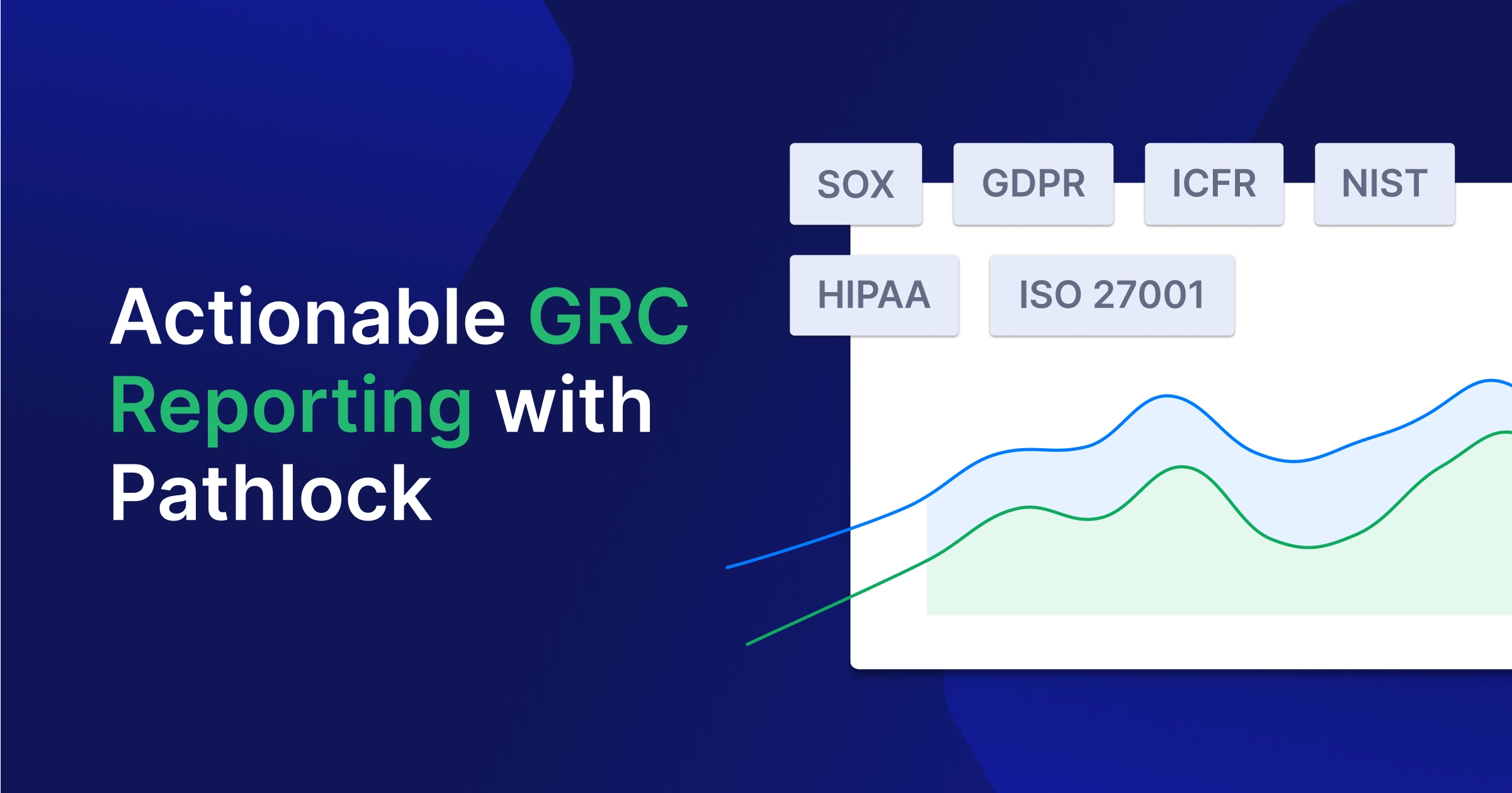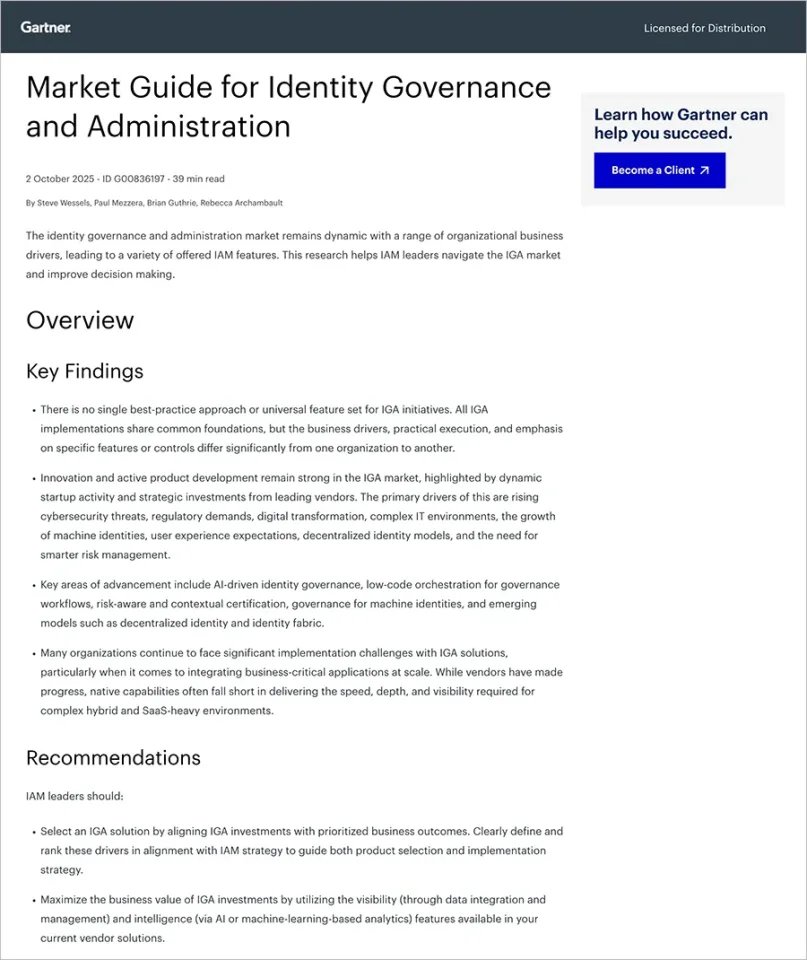Safeguarding user identities and access rights is paramount for organizations to prevent data breaches and maintain compliance. Identity Governance and Administration (IGA) provides a comprehensive framework to manage digital identities and their access permissions and enforce security policies throughout the identity lifecycle.
This post details the essential principles of IGA Security, exploring key components such as Identity Lifecycle Management, Access Management, and Compliance Controls. By understanding these pillars, organizations can establish robust procedures for granting, reviewing, and revoking access rights, ensuring that only authorized individuals can access sensitive systems and data.
What Is IGA Security?
By definition, IGA is a framework within information security that uses a combination of processes and technologies to manage the access rights of users (digital identities) to systems and data within an organization. Within the IGA framework, specific systems and data can only be accessed by authorized individuals.
The Pillars of Effective IGA Security
Comprehensive Identity Governance and Administration security relies on three key elements: Identity Lifecycle Management, Access Management, and Compliance Controls. These components form a robust framework to prevent unauthorized access, safeguard data, and ensure regulatory compliance.
Identity Lifecycle Management
Identity Lifecycle Management marks the stages of an employee’s digital identity from entry to exit in your organization. It starts with creating user identities, updating them as their roles evolve, and deactivating them when they leave. Active management of these identities is vital to maintaining appropriate access rights for all users.
Here’s a snapshot of the process:
- Creation of a digital identity when a user joins an organization
- Updates to the identity as the user’s role changes
- Deactivation of the identity when a user leaves
Identity Lifecycle Management ensures access privileges align with each user’s current roles and responsibilities. Through regular updates, it minimizes the chance of someone gaining unauthorized access and security breaches.
Access Management
The second pillar, Access Management, determines who can access specific data and systems. It involves setting up rules for user access, monitoring these levels, and adjusting them as needed.
For instance, an employee transitioning from customer service to marketing will need different access rights. Access Management requires updating their permissions to include marketing data and tools and potentially revoking access to some customer service systems. Regular reviews of these access rights help maintain a secure environment.
Compliance Controls
The final pillar, Compliance Controls, involves the rules your organization follows to meet compliance standards. This is particularly important in highly regulated industries like healthcare, banking, or financial services where regulations govern data storage, access, and sharing.
Compliance Controls require regular audits of your organization’s data access and usage, identifying anomalies or unauthorized activities, and taking corrective actions when needed.
Each pillar is essential for a robust IGA security system, working together to protect your organization’s identities and data.
Challenges in Implementing IGA Security
IGA implementation often comes with a set of challenges. These hurdles, varying in nature, can be overcome with strategic planning and a thorough understanding of the process.
Issues with Scalability and Flexibility
Organizations often struggle with scalability during IGA security implementations. As the company expands, the IGA system needs to accommodate more user identities and manage a growing number of applications, systems, and data repositories. Unfortunately, due to this growth demand, many IGA solutions face performance degradation or are unable to handle larger volumes of data.
Besides scalability, flexibility is another issue. As business needs and processes evolve, an effective IGA system should adapt to these changes without requiring excessive effort or system reconfigurations.
Complexity of Integration
Integrating the IGA solution with other systems within the organization is often complex. The IGA platform must be compatible with various systems, including HR software and various applications. Each system’s unique characteristics and requirements can make integration a lengthy and intricate process.
Additionally, collecting and managing this data can be overwhelming, especially with a large number of users and access points.
Despite these challenges, organizations should not shy away from implementing robust IGA security measures. Recognizing these obstacles and planning for them is the key to developing a secure, scalable, and compliant IGA system.
Strategies for IGA Security
Maximizing IGA security benefits requires a strategic approach. Here, we explore practical strategies organizations can use to optimize their IGA security posture.
Least Privilege
The Principle of Least Privilege (PoLP) is a vital concept in IGA security. It involves granting users only the minimum access necessary for their job functions.
Adopting this principle helps prevent data breaches. By limiting each user’s access rights, the damage from potential breaches is minimized. It also simplifies user permission management by focusing only on what’s essential for each role.
However, PoLP implementation needs regular audits. These ensure access rights stay relevant as roles and responsibilities change within the organization.
Separation of Duty
Separation of Duties, or “SoD,” is another vital IGA security strategy. It involves distributing responsibilities among multiple people to prevent fraud or errors. In the context of IGA, the principle of SoD is implemented to restrict users from having undue control over data or procedures.
Ideally, the individual responsible for executing payment transactions shouldn’t be the same one granting approval for them. By dividing business tasks across users, the susceptibility to deception is curtailed, and the safety of the system is boosted.
The identification of SoD risk necessitates comprehension of the functions and duties associated with various roles in the business. This comprehension allows for efficient assignment allocation in accordance with the principle of Separation of Duties.
- Implementing the Principle of Least Privilege can lessen the harm caused by data breaches by limiting users’ access rights.
- Limiting users’ control over processes and data through Separation of Duties decreases their vulnerability to fraudulent activities.
Elevated Access Management
Elevated Access Management (EAM) is vital for securing data and systems in businesses. Users with elevated access usually have access to sensitive information. As a result, they are prime targets for cyberattacks. EAM involves managing and securing these accounts through strategies such as revocation of standing privileges to sensitive access, requiring approval prior to temporary and time-bound provisioning of sensitive access, robust password policies, continuous monitoring, and enforcing least privilege principles.
Effective EAM reduces risks of data breaches, safeguards against internal and external threats, and ensures compliance with regulatory standards. By managing sensitive and privileged access, organizations can enhance their cybersecurity posture, prevent privilege creep, and improve operational efficiency. Implementing best practices is essential for protecting critical assets and maintaining a secure IT environment.
Just In Time Access
Just-in-Time (JIT) Access is a security strategy used within PAM that grants users elevated access permissions only when necessary and for a limited period. This approach minimizes the risk of abuse or misuse of privileged accounts by ensuring that high-level access is temporary and tightly controlled.
By adopting Just-in-Time Access, organizations can strengthen their security posture, reduce risks associated with sensitive access, and maintain efficient and compliant operations.
Auditing and Tracking
Auditing and tracking in Elevated Access Management are essential for security and compliance. Continuous monitoring and detailed logging of privileged account activities help detect suspicious behavior and unauthorized access, reducing security risks. Regular audits make sure that internal policies and regulations are being followed, while access reviews validate that privileges align with users’ roles.
The incorporation of these tactics can strengthen a corporation’s framework for IGA security. As the organization continues to develop and change, these tactics must be regularly evaluated and adjusted to remain useful.
The Role of IGA Security in Compliance and Risk Management
IGA plays a crucial role in enabling businesses to meet stringent compliance requirements set forth by various regulations, such as SOX, GDPR, NIST, FERPA, PCI-DSS, ISO-27001, and more. These regulations mandate strict controls around data security, user access management, and audit trails.
With its central user access governance capabilities, IGA ensures that only authorized individuals have access to sensitive data as per their job roles and responsibilities. It implements principles like least privilege access and separation of duties to restrict excessive permissions that could be exploited. Granular access controls and recertification processes within IGA solutions prevent privilege creep.
IGA provides comprehensive audit trails and reports detailing all user access activities across the IT infrastructure. This audit logging is vital for proving compliance during regulatory audits by providing evidence of proper access management hygiene.
Overall, by governing identities, enforcing least privilege policies, separating duties, and enabling auditing and monitoring, IGA forms the frontline defense to protect against data breaches and insider threats while ensuring regulatory compliance across the organization.
Go Beyond IGA with Pathlock Application Access Governance
Traditional identity governance solutions are focused on applying broad security policies across a wide variety of applications – and are not focused on addressing entitlement risk. This can lead to over-provisioned users, orphaned accounts, and significant blind spots for fraud and misuse of data. Furthermore, as audit and compliance teams focus on expanding audits beyond core ERP systems and into line of business apps, organizations must plan how to holistically address risk across their application landscape.
Pathlock recommends that organizations consider going beyond traditional, course-grained IGA to future-proof their compliance and governance programs. This begins with investing in technology that focuses on identifying entitlement risk before security roles go into production, along with monitoring 100% of transaction activity to identify authentic risk.
Pathlock’s Application Access Governance product offers the ability to meet you where you are today in your governance journey and then help you achieve your compliance goals for tomorrow. Capabilities include streamlining IT and business processes for provisioning, de-provisioning, user access reviews, access risk analysis, and elevated access management. The addition of these capabilities helps ensure IT controls that are consistent and audit-ready, resulting in a more cost-effective, efficient, and timely governance program.
Talk to our experts to understand how Pathlock’s Zero Risk approach to managing user access within and across applications delivers a robust framework for compliant identity and user access risk governance.



